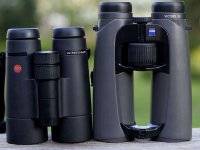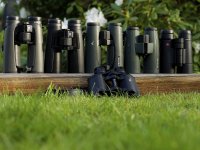"I feel the same - Leica seems to be optimizing nowadays for small size and weight, combined with sleek design and handling. The optics are good, but not outstanding."
This excellent post by Jring got me thinking about if some manufacturers like Leica optimize their binocular design for size and weight at the expense of the optics. The Zeiss SF and HT and Swarovski Swarovision models are much bigger than the Leica's Ultravid Plus in most apertures. Will a BIGGER, LONGER binocular outperform a smaller one of equal quality because it has a longer focal length and bigger prisms or can a compact binocular perform just as well if they have the SAME aperture?
This excellent post by Jring got me thinking about if some manufacturers like Leica optimize their binocular design for size and weight at the expense of the optics. The Zeiss SF and HT and Swarovski Swarovision models are much bigger than the Leica's Ultravid Plus in most apertures. Will a BIGGER, LONGER binocular outperform a smaller one of equal quality because it has a longer focal length and bigger prisms or can a compact binocular perform just as well if they have the SAME aperture?
Attachments
Last edited:







